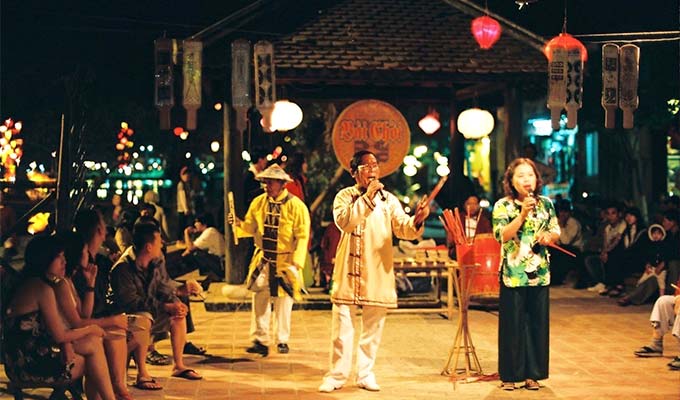The Ministry of Culture, Sports and Tourism will organise the Professional Theatrical Arts, Bai Choi (Folk Singing) and Opera 2018 in the central city of Quang Ngai between October 20 and 28.

Artists perform bài chòi at a night show in the central city of Hoi An
So far, as many as 15 plays by eleven theatrical troupes have registered for the festival.
Le Chuc, an organiser, said most of the plays were new while some old plays had been revamped with contemporary scenes and settings.
The opening ceremony for the festival will be held at 8pm on October 20, while the closing and awards ceremony will take place at 8pm, October 28, at Quang Ngai City’s Culture House.
The art of bai choi originated almost 400 years ago, when Dao Duy Tu, an outstanding mandarin under the reign of the Nguyen Lords (1558-1777) who later formed the Nguyen Dynasty (1802-1945) in Hue, created the artform to entertain the community after harvests.
Bai choi, which literally means a deck of cards (bai) and bamboo huts (choi), is half game and half theatre performance. Nine bamboo huts on stilts are erected on a spacious plot of land, in two rows, each made up of four huts for the players. A bigger hut is in the middle, with a wooden stand for the games master.
One to three players share a hut while the audience surrounds the rectangular play area. At the beginning of each game, each hut receives three cards. The games master sings folk songs that include the names of 27 cards, giving clues to the players as to what their cards might be. The aim is for the players to guess their cards.
The players must find the name of the card mentioned in the verses in the song, and then find out the coinciding cards in their hands. The winner is the first hut to have three cards that coincide with the names given by the games master.
The singing, dancing and gestures are accompanied by music played on traditional instruments and cheered on by the audience. Bai choi stories include lessons on morality and compassion, as well as love for the village and the nation.
The art was recognised as a world intangible cultural heritage by UNESCO in December 2017.